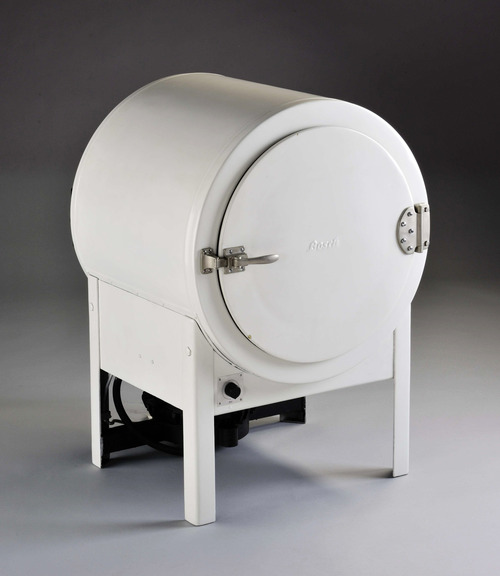
The key to servomotors, the thing that makes them amazing, is that they don’t just go. They go, stop, speed up, slow down, and generally monitor and adjust on the basis of a closed feedback loop. This allows for very precise movements, more precise in many cases than humans can achieve. They can be used in combination, too, so that very precise movements can be made in a sequence.
Practically ballet.
Feeders
One of the machines that benefits from servomotors is a feeder. You push a DVD into your TV or a dollar bill into a vending machine, and you’re doing essentially what a feeder does.
One of the big differences is that a feeder can push a 72″ sheet of steel into precisely the right position so that it can be cut into shape for a refrigerator.
That piece of steel must be crimped or welded together with other pieces of steel to form the outside jacket of the fridge, and some brands use steel for the inside layer as well. Then some vacuum-molded plastic has to be fitted in and a robot (sometimes a human, but typically now a robot) will push some insulation between the two layers. Color is sprayed on (if it wasn’t done for the sheets of steel) and the whole thing is baked to ensure adherence of the paint and also to make the insulation expand to fill the space perfectly.
Think about all the possible points of failure.
Refrigerator history
It’s conceivable that early refrigerator makers lavished all kinds of hand craftsmanship on the cabinets of their refrigerators. The first artificial refrigeration machine was built in 1748, but the inventor couldn’t think of any practical use for it. In 1844 an American doctor built a similar machine to cool the air for his patients who suffered from yellow fever. The first Bosch home refrigerator, launched in 1933, was round. A fridge was a fairly rarefied piece of equipment in the early days. By now, we expect to have refrigeration whenever we want it, and of course we expect that fridge to fit precisely in the space made for it in the kitchen. Mass production is essential, and there’s very little room for error in construction. Servomotors are a must.
Many feeders use Indramat drives, our favorites. Electric servos are generally preferred for their speed and accuracy in this kind of application. If your feeder’s motion control or any other Indramat unit is acting up, call us first. In fact, put our number in your phone now so you’ll have it handy. (479) 422-0390 is the only number you need for Indramat service and support.
